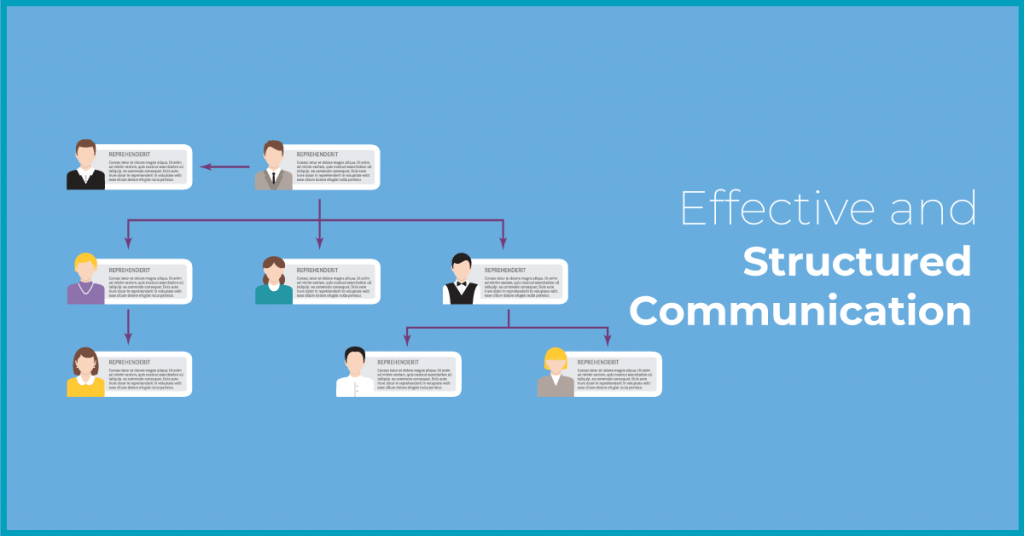1. An All-Remote Workforce: How Does Gitlab Do It?
With over 1300 members spread across more than 65 countries, GitLab -the development lifecycle software pioneer-- has the world’s largest, 100% remote workforce. Valued at over USD $2.75 billion (after doubling its evaluation last year), GitLab’s performance needs no introduction.Now, can you imagine that founders, Sid Sijbrandij and Dmitriy Zaporozhets didn’t actually intend to do business as an all-remote company?It's just that the initial logistics happened to be such. Leveraging the situation, the talented duo went on to weave their growth story around an all-remote team.If you are looking to build your all-remote company, the GitLab story is every affirmation you need.What is all the more interesting is the fact that theirs is an all-remote mantra, different from the more popular, remote-first principles. Here is how they define all-remote-“All-remote means that each individual in an organization is empowered to work and live where they are most fulfilled. By including the word "all" in "all-remote," it makes clear that every team member is equal. No one, not even the executive team, meets in-person on a daily basis.”On the other hand, a remote-first culture imbibes aspects from an all-remote one (asynchronous communication, a focus on documentation among others) even when the former has a physical headquarters or has a guide to working remotely.You can go on to choose the one that would suit you the best. But the factors around Gitlab’s remote work policy success are constant.
2. What is it Like Working for GitLab Remotely?
CREDIT where it is due - GitLab's six values are ? Collaboration, ? Results, ⏱️ Efficiency, ? Diversity, Inclusion & Belonging, ? Iteration, and ?️ Transparency.A lot of organizations have similar values but the difference is in Gitlab’s commitment to them. Early on, the company began to build a healthy remote work company culture supported by meticulous processes.They believe that classic, ‘organic’ functions in a traditional work setup need dedicated effort while enabling flexible working arrangements.So let us look at some of the driving values and best practices that have made GitLab the success story that it is.2.1. Transparency is a Key Driver of the GitLab Remote Work Playbook
Imagine your all-remote workforce. Your team can comprise a variety of characters -- an overthinker, an impulsive texter, or an aloof worker stuck in his/her own context.They are all high-performing and you value them. But how can you ensure that they know that you have their best interests in mind? Or that the company is really doing what it set out to achieve?Transparency is one of the only sustainable ways to build trust when you are a remote company. GitLab’s commitment to transparency deserves a special mention. Practically everything an employee requires is documented, communicated, and easily accessible. Their Handbook, often considered a remote workforce handbook benchmark, (that will run over 5000 pages if printed) has everything you could think of. Company history, culture, protocol, growth goals, key goals and metrics, product strategies, hiring and leadership processes, different programs within, and everything about sales, marketing, engineering, legal functions to name a few. Not only are parts of the Handbook publicly accessible, but issues and fixes learned from past hiccups are also on display.This dissection of an unfortunate outage from way back in 2017 is one of the many examples of how GitLab has employed transparency to overcome its setbacks. By their own admission, transparency comes with multiple chances for continuous improvements - Kaizen moments as they call it -- that together let teams become better versions of themselves.Further, transparency has let GitLab build a community of cheerleaders and collaborators from across the world. The fact that practically everything other than obviously confidential items is out in the public makes its 3000+ code contributors cheer for the organization.
2.2. The Remote Work Manifesto is all About Effective and Structured Communication
The Gitlab remote work manifesto guards the company's culture like a hawk. Communication is as well defined and structured as everything else. From day one, communication is not mere interaction. Apart from the general emphasis on communication etiquette that every organization has, there is an 8-point directive on responsible communication at GitLab. Kindness, and anti-harassment stand out in the list.The culture has achieved an enviable balance between frequent, valuable communication and a complementing focus on productivity. Governed by processes, people don’t slack one other on an ad hoc basis. Structured communication makes frequent, pesky requests avoidable. Plus, their detail-oriented documentation makes it easy for members to ‘self-service.’ Mindful of different time zones, GitLab encourages employees to raise requests when suggestions are made. With 1:1 video calls when required (that come guarded with protocol), people resolve issues as well as bond meaningfully. When remote, you cannot ‘assume.’ GitLab’s love for structure reflects everywhere -- social media communication, feedback sharing, requests and more. As a starting point, team members are encouraged to utilize GitLab the tool itself for effective asynchronous communication. They use a multi-pronged approach. The Handbook’s chapter on communication aside, the Learning and Development center goes to great lengths for on-the-job training that fosters active communication. Given how most of it is text, sessions such as this area game-changer for the team. Before you think it is all work and no play, GitLab shows how it can be more flamboyantly fun than non-remote companies. Team members are encouraged to foster relationships over programs such as
As a starting point, team members are encouraged to utilize GitLab the tool itself for effective asynchronous communication. They use a multi-pronged approach. The Handbook’s chapter on communication aside, the Learning and Development center goes to great lengths for on-the-job training that fosters active communication. Given how most of it is text, sessions such as this area game-changer for the team. Before you think it is all work and no play, GitLab shows how it can be more flamboyantly fun than non-remote companies. Team members are encouraged to foster relationships over programs such as- In-person visits
- No cost stays at the CEO’s AirBnB in the Netherlands
- Different slack channels
- Zoom calls that involve families and feature pets.
- Online celebrations, luncheons, pizza parties, and scavenger hunts.
2.3. The Remote Work Handbook Testifies Detailed Documentation
Documentation = Consistency.Public Documentation = AccountabilityGitLab has experienced 50x growth in 4 years, reaching the $100M ARR (annual recurring revenue) mark in 2020.At every step, they have documented processes, including this very growth story. This is the real deal, thorough documentation. Not the ‘he said /she said’, ‘refer to slack’ half baked words that are a staple at most companies. They publish such information publicly and advocate sharing. Documentation and their ‘Handbook’ first approach is the foundation that supports their transparency and communication. Here are some quick takeaways-
Documentation and their ‘Handbook’ first approach is the foundation that supports their transparency and communication. Here are some quick takeaways-- They say it is never too early to build your bible- When you are a smaller team, it is attractive to forego documentation for a few extra hours of work. And it may even be viable in the short-term. But the process-less culture catches on sooner than you expect. As a result, it either gets too late to course-correct or the organization fails to reach its potential only because teams do not know what to do next. Do not fall into that rabbit-hole. Define everything and insist on consistency, just as GitLab does.
- They google doc and don’t rely solely on slack - Around the water cooler or in the cafeteria, teams often informally exchange ideas and help each other (in addition to the daily dose of fun banter, of course). In the context of a remote workforce, it is easy for some of the members to feel cut off especially when they are stuck with a problem. GitLab uses docs to actually record all their learning, covering every summit and all the hillocks along the way. As a result, teams can always rely on each other’s knowledge while the elaborate documentation guidelines further enforce uniformity and transparency.
- No, your documentation never ends - 5000+ pages of a handbook that is still evolving? But it is no surprise for a team that is doubling by the year. As teams grow, so do processes. And, this living ecosystem deserves its recognition with documented processes and shared resources.
2.4. Working for Gitlab Means Bias for Action Favors Frequent Iterations
Bias for action -- the ability to ‘act’ amidst uncertainty and take decisions even when faced with adversities favors frequent releases. They are not always used in the context of software companies for code releases. They are also new projects and consistent, meaningful updates that teams share with each other. Away from each other and working asynchronously, frequent releases become the ammunition that keeps teams excited. But, far away from each other, everyone wants to put their best foot forward). So, they often refuse to share anything that is not perfectly polished. Short iterative launches show teams how human the other group is. Besides, early feedback saves precious productive days. Their sub-value underneath the iteration directive is ‘low-level of shame’. A quality that lets you celebrate small changes and be vulnerable enough to share ‘work that is in progress.’ They have a simple policy at the engineering level -- every 22nd, there is a new release, with publicly available direction, regardless of its perfection. Based on customer feedback, the features are improved and shipped. This is not a well-kept secret. It is a public claim on their website. What is the best lesson here, you ask? When quizzed if he always knew the company would be successful, CEO Sid says, “It was iterative!” He further adds that, from building their social channel hacker news post to the Y combinator stint, different points of inflection led to the epiphany!
They have a simple policy at the engineering level -- every 22nd, there is a new release, with publicly available direction, regardless of its perfection. Based on customer feedback, the features are improved and shipped. This is not a well-kept secret. It is a public claim on their website. What is the best lesson here, you ask? When quizzed if he always knew the company would be successful, CEO Sid says, “It was iterative!” He further adds that, from building their social channel hacker news post to the Y combinator stint, different points of inflection led to the epiphany! 2.5. Their Leaders are the Biggest Believers and the Results Show
Free from the ‘us’ vs. them management ivory towers, GitLab’s Leadership strongly believes in the strength of their remote workforce culture. They do not have secretive, in-person meetups or a different rulebook for themselves. Teams get access to a meeting schedule that is fair and factors time overlaps. Leaders are encouraged to inculcate ‘servant-leader qualities -- humility, ego-free action and more importantly the empathy to go out of their way to make reports (especially those new to all-remote situations) comfortable. It isn't enough, though. Remote managers need to be able to be there for their remote workforce and the monotone gruffness infamous at the physical office does not cut it.
3. Bonus Tips for Working Remotely
3.1. Their Hiring Best Practices
Their hiring philosophy is both straightforward and eloquent -- “GitLab envisions a world where talented, driven individuals can find roles and seek employment based on business needs, rather than an oftentimes arbitrary location.”Stellar growth year-on-year is a direct result of awareness-guided hiring. Here are a few remote work best practices companies could learn from -- Coachability is often as dear as skills are when your operations are spread across the world
- Hire from anywhere and look for ‘CREDIT’ like values in your people
- Use video calls and pick on nonverbal cues effectively
- Be cognizant of local restrictions and limitations
- No, the best talent is not limited to popular metropolitan cities
3.2. Their Productivity Secret Sauce
All-remote is not a party zone. Neither is it a one-way ticket to burnout. At least not when you are working for GitLab. The company believes in- Objectives and Key Results (OKRs) and
- Key Performance Indicators (KPIs).
 Interested in Virtual Team Building Events?
Interested in Virtual Team Building Events?





















